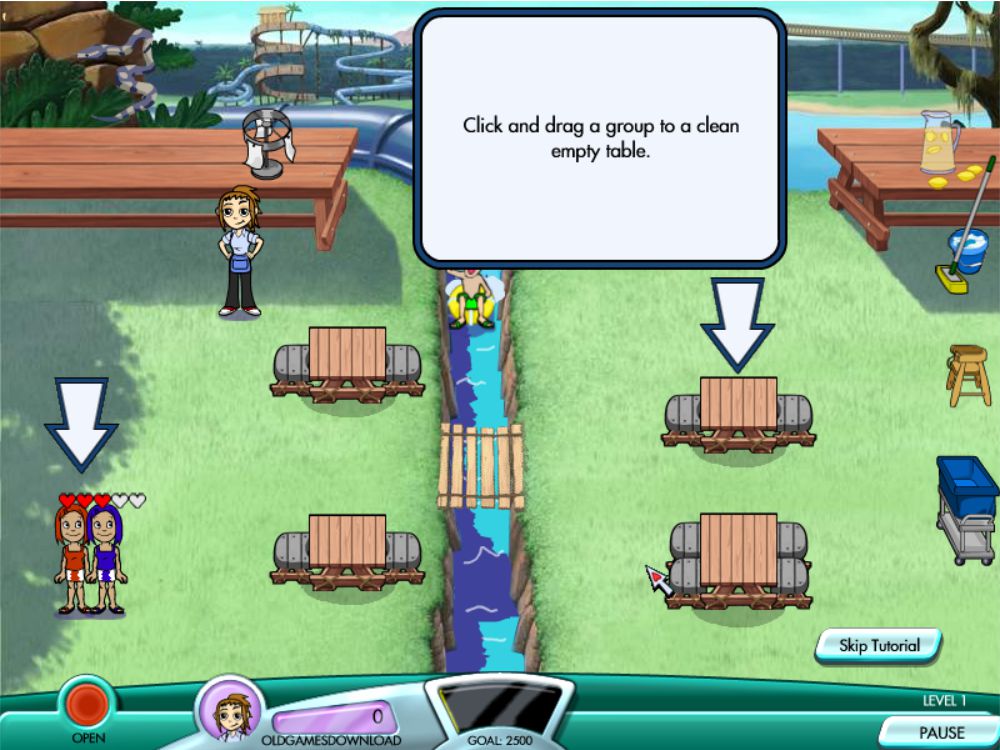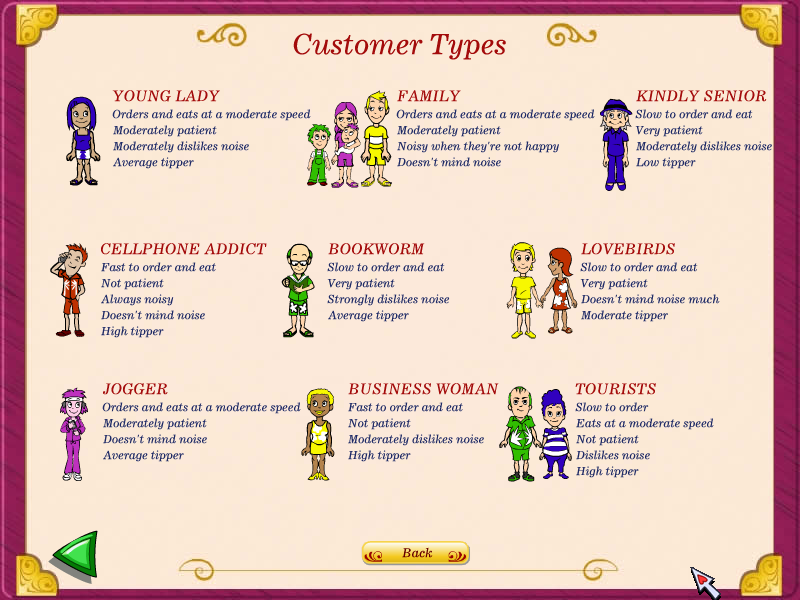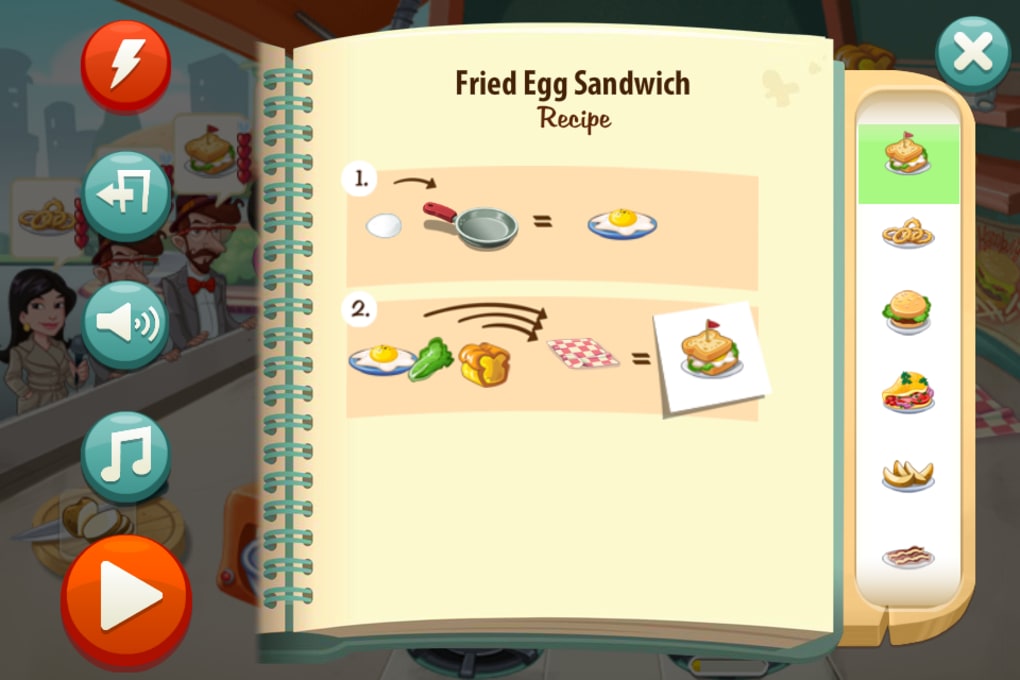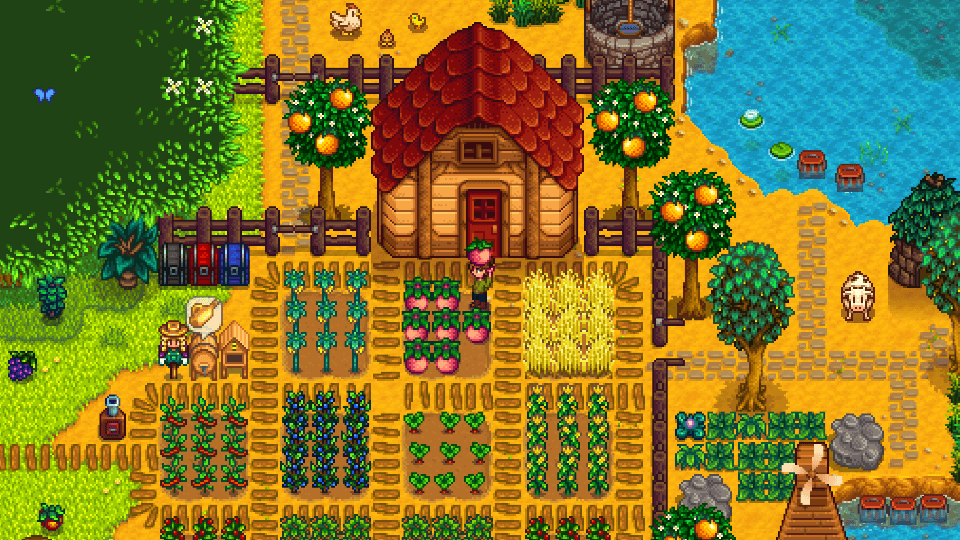Game Concept
Concept statement
A cooking-combined running restaurant, challenging game in which you must deal with demanding customers, complicated recipes, and time restrictions.
Genre(s):
'Blue in Town' is a strategy and time-management video game based on a single-player. 'Blue in Town' focuses on skillful thinking and planning to wisely complete missions in the game within a limited time. Although the play style of 'Blue in Town' is restful and peaceful in terms of graphics, it still requires the player to calculate the time, memorise many recipes, and keenly implement a suitable sequence to complete many unforeseen requests arising. The faster tasks completed, the higher goal achieved.
Concept creation process:
The idea creation of 'Blue in Town' is inspired by the two following video games:
'Diner Dash' (published by PlayFirst):
'Diner Dash' is an eventful strategy and time-management video game in which the player can run a restaurant. They will be able to serve customers and earn scores to pass every single level [1]. 'Diner Dash' allows the player to use the left mouse button to drag and drop customers to tables, tell the main character in the game what to do and where to go [1]. (Pic 1.1)
There are several types of customers with various characteristics, different levels of patience, and tipping habits in 'Diner Dash'. The player can wisely arrange them at seats where keep them being happy so that they will pay the highest tip depend on their preferences [1]. (Pic 1.2) If customers wait too long, they will get angry and leave [1].
To pass a level, the player needs to achieve enough scores and get one star. However, there are still other two higher goals at every level for those who are excellent gamers. If not passing, the player will have a chance to play this level again.
'Blue in Town' inherits all features described above. However, the number of types of customers in this video game will be less than 'Diner Dash' (roughly 3 to 4 rather than 9). The player can direct two characters (the waitress and the chef) at the same time. After every three levels and some requirements completed, the characters will upgrade a new skill (including dashing, self-cleaning tables, and fast cooking).
'Kitchen Scramble' (published by PopReach):
'Kitchen Scramble' is a fast-paced cooking game in which the player becomes a new chef working on a small food truck. The most compelling feature of Kitchen Scramble is that the player will follow given recipes to cook and deliver food to customers quickly [4]. (Pic 2.1)
In 'Blue in Town', the player can take on the role of both a waiter serving customers and a chef making food. When controlling the chef, the player must choose the correct ingredients listed in recipes. Not as Kitchen Scramble, 'Blue in Town' will remove all cooking processes, for example, frying or chopping, the player only needs to select all ingredients correctly to make food.
Audiences and competitive analysis
'Blue in Town' is promisingly playable and enjoyable to people at a wide range of ages and skill levels. However, the most potential audiences of this game should be young people older than thirteen, especially women, and adults who are looking for an audience-friendly, relaxing play-style containing game. This game is also for those who love cooking as well as working in a restaurant. It does not require much skillful manipulation, but it is still interesting enough due to rules, challenges, and high goals in every single level that the player must mainly use their thinking and planning skills to pass.
A distinct feature of 'Blue in Town' from other cooking games is that it emphasises on both cooking and serving, whereas, the others only focus on one of these two aspects. For example, 'Diner Dash' aims players at 'front of house' work in a restaurant such as serving customers, delivering food, cleaning tables, or processing payments [1]. Another instance is that 'Kitchen Scramble' includes a large number of levels and recipes as well as detailed cooking processes. However, the interactions between the main character with customers in this game are insignificant [4].
'Blue in Town' is a relatively complete combination of these two games. The game allows the player to manage customers' seating, their orders, and their satisfaction via dragging and dropping them at where make them comfortable and giving them side dishes such as coffee or cupcake to increase their happiness. Moreover, the player will also have a chance to deal with cooking tasks as a chef in a restaurant. Based on those, it is no doubt that 'Blue in Town' will be a more compelling and more realistic video game in terms of content and gameplay for loving cooking gamers.
Game treatment
Background story
Blue is a girl living in a small unnamed town. Influenced by her talented but retired chef grandma, Blue always dreams about owning a globally famous series of restaurants.
The story starts after the death of Blue's grandma due to a heart disease. Blue decides to quit her current job at a laboratory and carry out her life's aspiration. Blue and her best friend, Alice, begins their business at Blue's home, trying to earn enough money to buy a new restaurant. However, the way to success is not as simple as imagined when Blue and Alice must try their best to please their exacting customers in the town every day.
Gameplay is about three small restaurants operated by Blue and Alice. Each restaurant serves a specific menu. The number of dishes on the menu will depend upon the difficulty of a level. You will lead Blue to move around a restaurant to take orders, deliver food to customers, give them a check, and clean dirty tables before the next turn comes. You can also direct Alice to walk around the kitchen and grab ingredients listed in given recipes to make dishes.
Game features
- Diverse types of customers
In 'Blue in Town', each customer has a specific preference regarding waiting time, tipping habit, and seat. A crucial rule of the game is that the higher level of satisfaction of customers, the more tip they give. Therefore, to make sure that their happiness will not decrease, you need to drag them to the place that they feel the most comfortable. For instance, a student who is annoyed by noise will be unpleased to sit next to a phone addiction, so her seat should be arranged far away from him.
- Recipes
Recipes for each menu will be demonstrated in the Help menu on the title screen. The player can also reach it via clicking the Recipes button on the game scene. Recipes show you what components you must tell Alice to choose so that she can complete a dish. A wise strategy to perform well at every level is to remember all recipes and immediately select correct ingredients whenever an order is taken. If Alice grabs an incorrect element, she will cook a weird thing. If Blue deliver it to a customer, their happiness decreases. However, you can direct Alice to throw it in a wastebasket.
- Challenges
The difficulty of the game will increase after each level. The game has ten levels in total. After a stage (a level), the number of customers within a fixed time will enhance. In other words, the time-space between the appearance of customers will reduce.
For example, at the first level, Blue and Alice must serve ten customers within three minutes. At the second level, there will be more than ten customers (roughly 15 customers) walking in within three minutes. It means that you must work faster to pass. The level of difficulty will be reset after every three levels. At the final stage (level 10), you must serve 45 customers within 4 to 5 minutes.
- Goals
To pass a level, you only need to earn enough points to achieve one star. However, there are two higher goals for you to reach if you want to hit your limit. Sometimes, these goals will be the requirement that you need to meet so that Blue and Alice can receive their skills. The skills are relatively necessary when you are playing the level 10.
- Skill upgrading
The game includes ten levels in total. Along with passing every three levels, there are also some requirements that you must meet to upgrade skills for Blue and Alice. More specifically, Blue can only receive her first skill ('Dashing') if you pass the first three levels with three stars achieved at each. The same case for Alice ('Fast-cooking') after you win the next three levels and earn two stars at each. The final skill ('Self-cleaning table') will open before the last one.
Concept art
The target concept art of 'Blue in Town' is similar to 'Stardew Valley'. It will be a simple, colorful 2D pixel style demonstrated below.
These are some picture of the main character in 'Blue in Town'.
There are also some demonstration of an in-game restaurant in 'Blue in Town.'
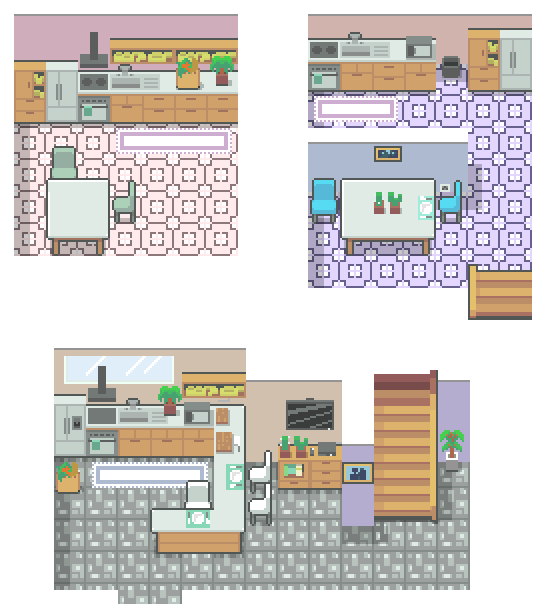
Referencing
1. https://dinerdash.fandom.com/wiki/Diner_Dash
2. https://oldgamesdownload.com/diner-dash-seasonal-snack-pack/
3. https://www.mobygames.com/game/windows/diner-dash-flo-on-the-go/screenshots/gameShotId,198614/
4. https://kitchenscramble.fandom.com/wiki/Kitchenscramble_Wiki
5. https://kitchen-scramble.en.softonic.com/android
6. https://www.stardewvalley.net/
7. https://pipoya.itch.io/pipoya-free-rpg-character-sprites-32x32/devlog/99942/add-characters
Files
Blue in Town
More posts
- Documentation and User GuideOct 16, 2020
- Week 12 - Checkpoint 6 - TestingOct 13, 2020
- Game TestingOct 05, 2020
- Week 11 - Checkpoint 5 - User InterfaceOct 05, 2020
- Week 10 - Checkpoint 4 - Cooking and Customers (2)Sep 24, 2020
- Week 9 - Checkpoint 3 - Cooking and CustomerSep 18, 2020
- Week 8 - Checkpoint 2 - Basic Level BlockingSep 13, 2020
- Week 7 - Checkpoint 1 - Player MovementSep 11, 2020
